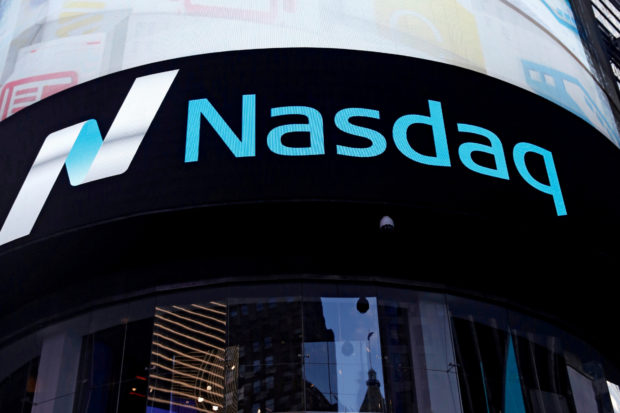
A view of the exterior of the Nasdaq market site in the Manhattan borough of New York City, U.S., October 24, 2016. REUTERS/Shannon Stapleton
Wall Street ended sharply lower on Thursday, with the Nasdaq tumbling 3%, hit by rising Treasury yields and fresh worries about the coronavirus pandemic in Europe.
Losses in U.S. stocks accelerated after France’s prime minister imposed a month-long lockdown on Paris and several other regions due to the health crisis.
It was the Nasdaq’s steepest one-day drop since Feb. 25.
The S&P 500 energy sector index tumbled 4.7% as oil prices fell, in part due to worries about rising COVID-19 cases in Europe.
“That last hit was from news of the Paris lockdown. It wasn’t received that well,” said Joe Saluzzi, co-manager of trading at Themis Trading in Chatham, New Jersey. “Here in the United States, we anticipate this big reopening and the virus is looking good, but we are not looking outside of the U.S., and it’s not all good.”
The Russell 1000 value index, which is heavily comprised of cyclical stocks such as financials and energy, lost 0.6%, while the Russell 1000 growth index, which includes technology stocks, dropped more than 2%.
The yield on the benchmark 10-year Treasuries crossed 1.75% to hit a 14-month high a day after the Fed projected the strongest growth in nearly 40 years as the COVID-19 crisis winds down. The Fed also repeated its pledge to keep its target interest rate near zero for years to come..
“The Fed just saying they are not going to raise rates until 2023 really means nothing,” said Tim Ghriskey, chief investment strategist at Inverness Counsel in New York. “The Fed is on the sidelines, but if bond yields keep going up, that is what really hurts the economy.”
Apple Inc and Amazon.com Inc both dropped more than 3%. Tech and other growth stocks are particularly sensitive to rising yields because their value rests heavily on earnings far into the future, which are discounted more deeply when bond yields rise.
A recent $1.9 trillion spending stimulus sparked fears of rising inflation and contributed to the jump in longer-end Treasury yields.
Underscoring the staggered recovery in the labor market, data showed the number of Americans filing for jobless benefits unexpectedly rose last week.
A separate report indicated the Philly Fed business index jumped more than expected, to its highest level since 1973.
The Dow Jones Industrial Average fell 0.46% to end at 32,862.3 points, while the S&P 500 lost 1.48% to 3,915.47.
The Nasdaq Composite dropped 3.02% to 13,116.17.
The S&P 500 and the Dow both closed at record highs on Wednesday.
Accenture rose 1% after the IT consulting firm raised its full-year revenue forecast and reported second-quarter revenue above analysts’ estimates, as more businesses used its digital services to shift operations to the cloud.
Dollar General Corp dropped 4.65% after the retailer forecast annual same-store sales and profit below estimates, indicating that a pandemic-fueled rush for lower-priced goods may be waning faster than expected.
AMC Entertainment climbed more than 3% after the movie theater operator said it would have 98% of its U.S. locations open from Friday.
Declining issues outnumbered advancing ones on the NYSE by a 3.69-to-1 ratio; on Nasdaq, a 3.42-to-1 ratio favored decliners.
The S&P 500 posted 85 new 52-week highs and no new lows; the Nasdaq Composite recorded 213 new highs and 28 new lows.
Volume on U.S. exchanges was 12.8 billion shares, compared with the 14.2 billion average for the full session over the last 20 trading days.